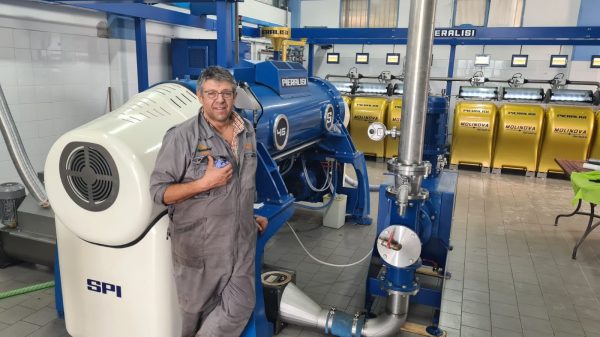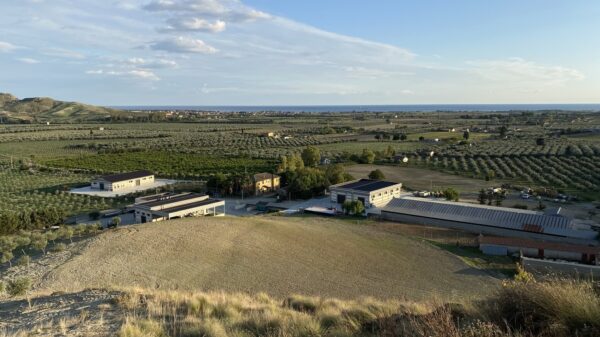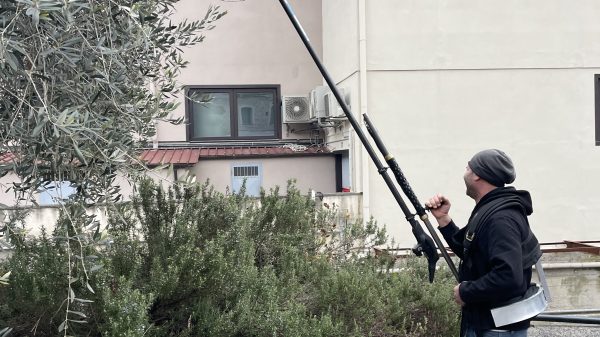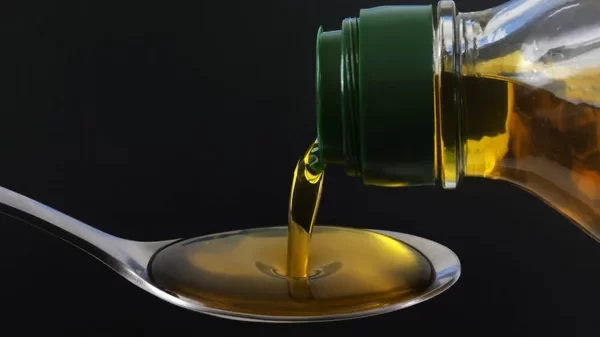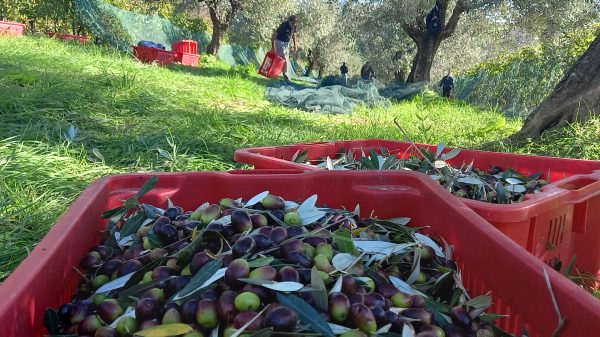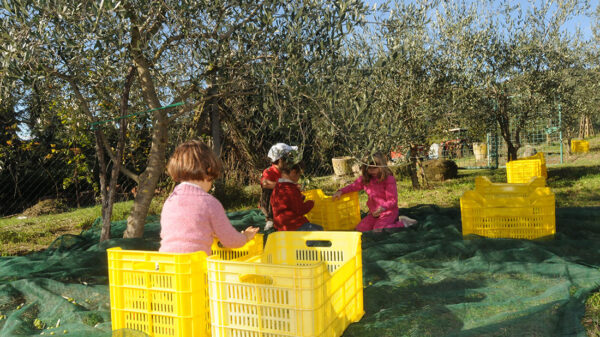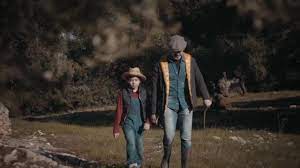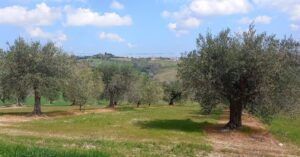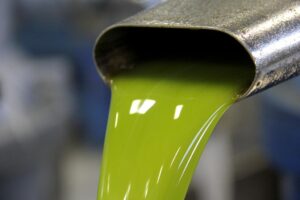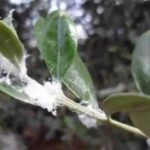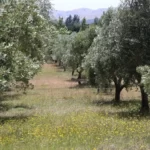The winter period is suitable for implementation useful and appropriate checks on the phytosanitary status of plants, also aimed at evaluating the presence ofxylophagous insects. questi they dig tunnels in the trunk, branches and branches and use wood as nourishment to complete their life cycle and consequently causing a reduction in lymphatic flow and compromising production.
The female of these insects lays its eggs on the woody surface and the larva that emerges begins to grow, nourishing itself on the substances contained in the wood, until it reaches the final stage, which occurs with the emergence of the adult insect.
These larvae are equipped with a bacterial flora that produces Cellulase, an enzyme that is capable of transforming cellulose into glucose, then into sugar from which they draw the energy to grow. The damage that is created is given by galleries, of more or less large dimensions, which the larva digs during its life cycle. The life cycle of a xylophagous insect can last several years, furthermore insects of different species and multiple generations of the same insect can settle on the same element.
Le infestations by xylophagous insects can be identified by observation se the crowns of the treesthey present desiccation and checking whether, in the woody parts below, there are holes or presence of rosume coming out of the wood. Once the presence of these parasites has been ascertained, the affected plants must be marked and, upon vegetative growth, the infested parts must be removed during pruning operations.
In this way, a "cleaning" will be carried out, which will be fundamental in olive groves where damage has been found in previous years.
Damage from xylophagous insects is more easily found near potential infestation points, such as neglected olive groves, woodpiles, near woods.
Also in young olive trees it is necessary pay attention and promptly identify the attacked plants, since as they are plants that are not yet completely lignified, they are more easily attacked.
Main insects that feed on olive wood
There are around a hundred species of xylophagous insects found on olive trees and which are able to feed on the wood in the larval state, whether alive or dead.
The xylophagous species actually widespread in olive groves are, however, only about ten and are reduced even more if the plants are rationally cultivated, although careful control is always required.
Rodilegni Lepidoptera
Among these the main xylophagous species are found the yellow Rodilegno (Zeuzera pyrina), a moth that is particularly harmful to young plants, because its larvae dig tunnels inside the small trunks, causing the vegetation above the point of attack to dry out. When these cases happen, it is possible to reconstitute the plant starting from an underlying shoot and eliminating the infested parts. The adult butterfly is white with black spots and is covered in velvety down. The adult females of Rodilegno lay their eggs on young branches, in correspondence with cracks or wounds. The newly hatched larvae are pink in colour, then the abdomen and thorax acquire a yellow-cream colour, with numerous black dots on the back, while the head takes on a shiny black colour, they dig tunnels in the branches, which can be identified by the presence of excrement shaped like cylinders and white-pink in colour.
La fight against Zeuzera involves interventions that eliminate the infested parts during pruning, first identifying the presence of the larvae inside the branches. In the case of small infestations and galleries of limited length, it is possible to use a wire to insert into the hole to pierce and kill the larva inside, a good method for small crops. If the tunnel gets too long, it becomes difficult to intervene with the wire so in spring it is useful to follow the emergence with pheromone traps, about ten per hectare and check the formation of new tunnels on the branches; it is also possible to use the sexual confusion method, with approximately 300-400 diffusers per hectare.
Bark Moths
Over the past few years, reports of infestations of two Rodiscorza Moths on olive trees have increased Euzophera pinguis , Euzophera bigella, which have always been present in Italy, with preference for the former for the vine, apple, peach and almond tree, and the latter for the ash or manna ash. The reasons for these infestations on olive trees are not yet known, perhaps there have been changes in the climate and therefore also in the environment that have pushed these moths to settle on the olive tree.
The female of Euzophera testifies eggs in the vicinity of lesions in the cortex, on the trunk and branches, produced for various causes.
The larvae that emerge penetrate through these wounds and develop at the expense of the woody tissues of the olive tree. Once it reaches maturity, the larva pupates and the adult emerges from a hole made in the wood. It has been seen that the greater infestations they are in olive groves with high presence of olive scab and where they took place important reform prunings. At the moment there is no defined activity to combat these lepidopterans other than the use of removal and burning of the infested portions and pheromone traps for mass capture.
Bark beetles
We often reveal the presence of bark beetles as:
- the Fleotribo o Olive weevil (Phloeotribus scarabaeoides), attacks those plants where the lymphatic circulation has been reduced due to adverse climatic events such as frost, hail, drought or other pathologies, digs tunnels to feed and reproduce, but can also settle on dead wood. The larvae are born from the eggs which, in turn, dig tunnels perpendicular to the maternal one; after about a month and a half the larvae develop into adults and, at the end of spring, emerge by piercing the bark; until the end of summer two more generations follow;
- L 'Brown Ilesino (Hylesinus oleiperda) and theIlesino spotted (Leperisinus fraxini), unlike the Fleotribo, these two small insects develop only on living wood and have only one generation. As soon as the wood is pierced, the females begin to lay eggs. The eggs will hatch after a week and the larvae will begin to feed on the wood, digging other tunnels in other directions. The external symptom is given by a reddish brown notch with a rounded outline in the center of which is the female's entrance hole.
At the end of winter the adults come out of their shelters and move to branches, where the females lay their eggs inside tunnels.
La fight against bark beetles and of agronomic type and is carried out by leaving pruning bundles in the field in the inter-rows on which the adults will lay their eggs. These "baits" must be eliminated by mid-May and the removed material must be treated with contact insecticides or, where possible, burned.
Bostrichids
Occasionally in olive groves close to woodland structures or other abandoned plants we can find infestations of two bark beetles, the Sinoxylon sexdentatum and Sinoxylon perforans, small dark beetles. Both species have only one generation per year and spend the winter as adults inside small tunnels dug into the olive wood. The first practice to be implemented for defense is a good "cleaning" of the olive grove, removing the infested wood which must be destroyed. Phytosanitary defense is difficult to implement and, also in this case, the rule of containment of populations with the use of "bait fascines" applies as for the Ilesino.
Another occasional bark beetle is the Cereal cappuccino (Rhyzoperta dominica), is reddish-brown in colour. The females lay their eggs in the tunnels they dig in the wood, the larvae that are born complete their development in a period of time varying from one to six months.
In the defense against this insect, an important role in its disappearance is played by winter temperatures which, if kept below 3°C, are not compatible with the thermal needs of the insect, whose optimal development temperature is 34°C and which does not survive at around 3°C.
AIPO Director
Interregional Association
Olive producers
Browse for free l'Olivo News click , here

